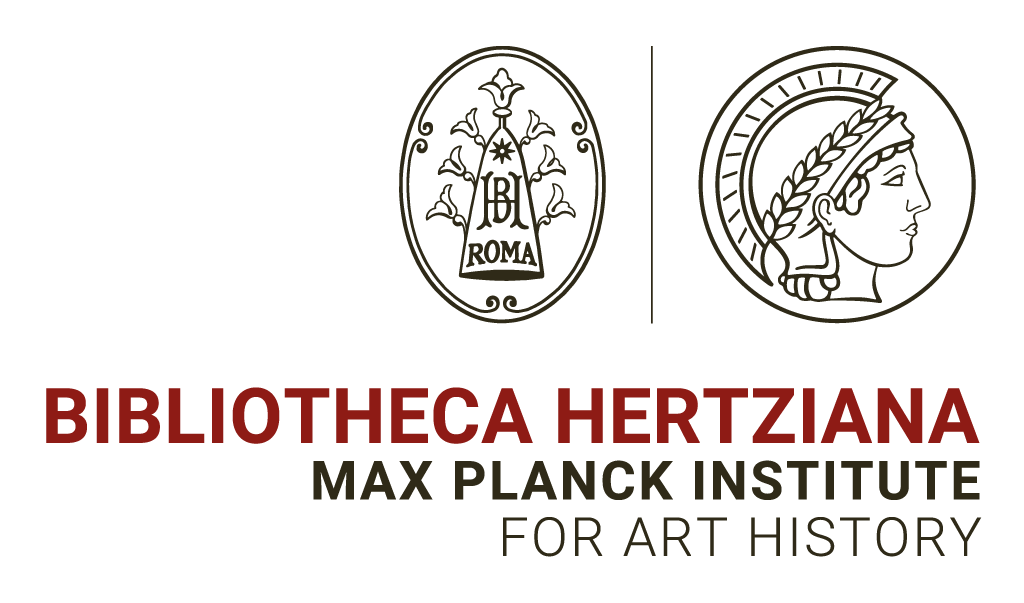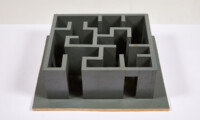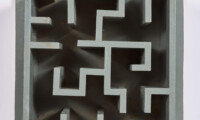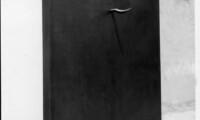Labirinto, 1971
Lacquered wood, 25×63,3×63,3 cm
Mauro Staccioli Archive Museum
Between the end of the 1960s and the early 1970s, the focus of the artist’s reflection is the existential condition of man and the related development of the theme of the Walls, structures loaded with iron tools such as spikes, butcher’s hooks, gratings and bars. The walls thus become cells, barriers impossible to cross, born from the memory of the tortures and massacres perpetrated by the Nazi Fascists against the partisans. It was therefore along these lines that Staccioli realized the Progetto Minosse in 1971, an intervention involving a 5×5 m labyrinth on the walls of which were hung large and heavy butcher’s hooks; a “Situation-Environment” in which the dimension of the labyrinth traps man, forced to relate to the space and to admit his impotence in the face of iron hooks, symbols of violence and death. The project was never realized, but the scale model and three walls with hooks were exhibited in 1972 on the occasion of the “Rassegna San Fedele” at the Galleria San Fedele in Milan.


© Enrico Fontolan, Bibliotheca Hertziana – Max Planck Insitute, Roma. Courtesy Archivio Mauro Staccioli.
L’Archivio Mauro Staccioli ha collaborato con la Bibliotheca Hertziana – Max Planck Institute di Roma per la digitalizzazione dell’intero corpus documentario afferente ai lavori realizzati o ipotizzati dall’artista, dall’inizio della carriera fino al 1988. Si ringrazia il fotografo Enrico Fontolan, il Digital Humanities Lab e il Fondo Fotografico della Bibliotheca Hertziana per l’enorme lavoro svolto. Tutto il materiale è consultabile online cliccando qui.













